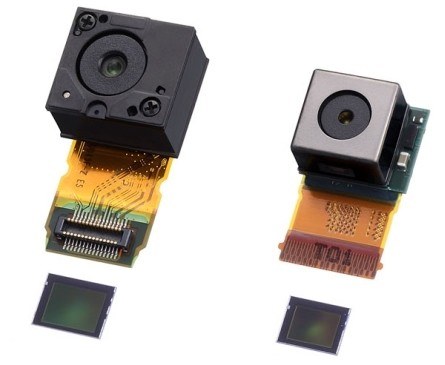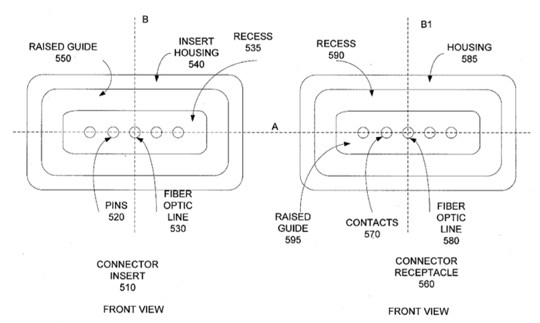Touch panel makers say Apple hasn’t released iPhone 5 production roadmap yet
Component suppliers from Asia have said that Apple has not yet released a production roadmap for the iPhone 5, providing further evidence that the company is planning a later-than-usual launch for its fifth-generation handset.
Citing sources at Taiwan-based touch panel makers, DigiTimes reported Wednesday that shipment volumes for the iPhone 4 continue to grow. In addition, Apple’s chain of suppliers are not yet ready to shift their production lines for new products.
Suppliers typically receive a timetable to stop production of the current product to prepare for the next-generation device. But instead, iPhone 4 touch panel shipments have remained steady.
Sources in Apple’s supply chain offered two different interpretations of the situation: Some believe Apple will slightly modify the iPhone 4 and release it in June or July as it has done in years past, while others see a possible "major overhaul" with the iPhone 5 coming at a later date.
Those in the latter camp said that it’s possible Apple has faced some design and component issues that need to be resolved. Such complications could push back the debut of the iPhone 5, an event that one rumor has said is unlikely to occur until Apple’s 2012 fiscal year, which begins in late September.
Apple typically shows off new iPhone hardware at its annual Worldwide Developers Conference in San Francisco, scheduled to be held this year June 6 through 10. However, numerous reports have indicated that while Apple will use the event to show off the next version of its iOS mobile operating system, no new hardware will be introduced this year.
Analyst: Apple keeping iPhone 5 cards very close to the vest
In a note to clients this morning, Ticonderoga Securities analyst Brian White writes:
The success of the iPad 2 launch is clear given the continued serial stock-outs, and one of our contacts believes iPad unit sales could reach up to 40 million in CY11.
Regarding the iPhone, we are increasingly becoming suspicious around continued reports of a delayed iPhone 5 launch into September/October versus the typical June/July time frame. Although we do not have a smoking gun that definitively rules out a delayed autumn unveiling or one that supports a launch this summer, there is a pattern of activity in motion within the supply chain that makes us question a delayed launch.
Essentially, we believe Apple is keeping its iPhone 5 cards extra close to the vest on this launch to avoid a falloff in iPhone 4 demand ahead of a refresh, especially given the February launch of the CDMA iPhone 4 with Verizon.
Sony CEO casually mentions he’s supplying cameras to Apple

Sony CEO Sir Howard Stringer reportedly let slip that his company is producing cameras for the next batch of iPhones and iPads during a public interview with the Wall Street Journal. Traditionally, Apple’s sourced its sensors from OmniVision, including the delightfully backside-illuminated 5 megapixel CMOS unit you’ll find in the iPhone 4, but since Sony too has BSI tech and OmniVision has reportedly encountered delays, your next portable Apple product might house a Sony Exmor R sensor like the one we admired on the Xperia Arc. Mind you, that may not end up actually happening, because of the context in which Sir Howard revealed the news -- according to 9 to 5 Mac, he said that the factory producing sensors for Apple was affected by the Japanese tsunami.
10 New Twitter Tools That Will Make Your Life Easier
Twitter continues to add a staggering amount of 460,000 users each day. In order to be fully equipped to stay on top of this popular web service, you can use Twitter tools to help. Here are 10 fresh, new Twitter tools that you can use to achieve greater productivity on Twitter-related tasks.
Sony boss reportedly reveals Apple’s plans for 8MP iPhone 5 camera - rumor
As noted by MacNN, reports surfaced late Friday that Stringer told The Wall Street Journal’s Walt Mossberg in an interview that a Sony camera sensor plant in Japan had been damaged by last month’s earthquake, delaying shipments of sensors to Apple.
However, Sony does not currently provide image sensors to Apple, prompting speculation that the electronics giant could be set to provide a higher-resolution camera for the next iPhone. OmniVision has been Apple’s camera supplier for the 5-megapixel camera on the iPhone 4 and the 3.2-megapixel sensor for the iPhone 3GS.
Stringer’s slip-up has led some to believe that an earlier rumor suggesting Sony would take over for OmniVision in providing an eight-megapixel sensor is indeed accurate. In February, an analyst claimed that OmniVision would be unable to produce an eight-megapixel sensor in time for the launch of the next iPhone and that Sony would step in to for at least the first wave of orders.
According to the report, Sony’s eight-megapixel sensor, which is used in the Sony Ericsson Xperia Neo, would suit Apple’s needs because it has a CMOS sensor for low light situations.
While the executive’s comments should certainly be taken with a grain of salt, it’s also possible that shipment delays of camera sensors corroborate rumors that Apple will hold off on showing new iPhone hardware at the company’s annual Worldwide Developers Conference, which runs from June 6 through June 10. Apple has traditionally revealed a new version of the iPhone at WWDC in advance of a June or July release.
Intel to debut Light Peak alongside Apple’s new MacBook Pros Thursday
European trademark applications filed by Apple have surfaced that would finalize the transfer of The Beatles’ iconic Granny Smith Apple logos from Apple Corps to Apple and expand the trademark to include technology products.
The pair of trademark applications filed with the European Trademarks Office was discovered by Patently Apple on Monday.
The transfer comes as a result of a 2007 legal settlement between Apple and The Beatles’ parent company Apple Corps. The settlement resolved a long-standing dispute over ownership of the "Apple" trademark by granting Apple all related trademarks, though the company is required to license certain trademarks back to Apple Corps.
As such, Apple’s recent filings for the Granny Smith trademark appear to be merely a matter of tying up loose ends. In the two applications, Apple has requested that the trademark for the former Apple Corps logo extend coverage to "computer hardware, online social networking services, mobile phones," as well as including broader categories such as musical instruments, games, clothing, advertising, education and broadcasting.

The resolution of the legal dispute between Apple and Apple Corps paved the way for the arrival of The Beatles’ catalog on Apple’s iTunes Music Store, though it took more than three years to happen. iTunes began carrying the band’s music in November of last year, with first week sales reaching 450,000 albums and 2 million songs.
According to a report earlier this year, the royalty split for The Beatles "could be more lucrative" than for other artists. Sources claim that the unique licensing deal between Apple and Apple Corps allows Apple to directly pay royalties to The Beatles and Sony/ATV instead of treating digital download sales as a retail sale and paying royalties to record label EMI.
Intel to debut Light Peak alongside Apple’s new MacBook Pros Thursday
On the same day Apple is expected to unwrap its new MacBook Pros, Intel said it will be briefing the press on "a new technology that is about to appear on the market."
Intel’s new technology to be unveiled will be Light Peak, according to a report by CNET, which attributed the news to an industry source familiar with the details of Intel’s event.
Intel’s announcement will also be made in San Francisco, strengthening the connection between its news and Apple’s expected release of new MacBook Pros and potentially other products, on the same day that happens to coincide with Steve Jobs’ birthday, and which falls one day after Apple’s shareholder meeting.
A report by the French MacGeneration said that upcoming MacBook Pros would premier an unknown "new technology," describing Light Peak as a possible candidate.
It also confirmed an earlier report by AppleInsider pertaining to sealed package deliveries of new inventory that were not to be opened, saying it could verify that French retailers had received new stock they could not open before Thursday, 1:30 PM Paris time.
AppleInsider sources have reported that new MacBook Pros will sport significant feature enhancements outside of the expected move to Intel’s Sandy Bridge CPU and chipset architecture. The inclusion of Light Peak could also explain an earlier report that claimed the new notebooks would sport minor modifications to their chassis design.
Apple and Intel have been publicly working together to deploy Light Peak for years, with Intel first demonstrating the technology on a Mac desktop system. Apple reportedly asked Intel to develop a new cabling standard with the ability to handle "massive amounts of data," and serve as a replacement for a variety of ports now in use, including USB, Ethernet, FireWire, and DisplayPort.
Intel has aimed the technology at achieving 100Gbps throughput via light using fibre optic strands, reflected in the technology’s moniker. But Apple is rumored to be using an electrical variant using copper wire that can achieve 10Gbps, and has filed patents that describe lower powered mobile versions suitable for devices like iPad.
One Apple patent depicted fibre optics and electrical conduits joined in a MagSafe connector, suggesting a universal port that could provide a variety of functions from supplying peripheral power to supporting very high speed data.

iPhone Mini? Apple Working on Smaller & Cheaper iPhone

Could an iPhone Mini debut this year? According to Bloomberg, Apple is set to unveil a smaller iPhone model in the middle of this year, which is around the same time the iPhone 5 release date and WWDC 2011 conference is expected.
iPhone Mini: iPhone 4 Components, 1/3 Smaller, $200
Citing a source who has seen a prototype, the smaller version of the iPhone that we’ll loosely call iPhone Mini will be cheaper and start at $200 without requiring a service contract. The device is said to feature components from the existing iPhone 4, but be about 1/3 smaller than existing models. Bloomberg’s source cautions that “the introduction may be delayed or scrapped” and that not many Apple employees know of the project.
iPhone Mini & iPhone 5: Dual-Mode with Universal SIM?
Possibly related, Bloomberg also says that Apple is working on dual-mode iPhones, which would allow a single device to work on both GSM and CDMA networks, in addition to a Universal SIM card that would allow iPhone users to jump between different GSM networks without switching sim cards. A Universal SIM may signify that iPhones carrying such a chip would be carrier agnostic, which would render the iPhone carrier unlock hacks irrelevant.
Bloomberg and iPhone Rumors
Earlier this year Bloomberg said that the upcoming iPhone 5 and iPad 2 models would become digital wallets through a built-in NFC chip.
Apple issues fourth beta of Mac OS X 10.6.7 with no known issues
For the fourth consecutive week, Apple has issued a beta of Mac OS X 10.6.7, the next update to its Snow Leopard operating system, to developers, who have been asked to focus testing on the Mac App Store.
Apple released build 10J855, available either as a 1GB combo update or 412.6MB delta update, on Thursday. According to people familiar with documentation for the update, there are no known issues with the build.
The first beta of Mac OS X 10.6.7 was seeded on Jan. 20, with updates following roughly within a week of the previous one for the past month.
Developers have been encouraged to focus on the Mac App Store, Airport, Bonjour, SMB file sharing and Graphics Drivers, said those familiar with the beta.
It is unclear what new features, if any, will be included in Mac OS X 10.6.7 when it is released to the public, but the launch of the Mac App Store last month is expected to be the last major feature added to Mac OS Snow Leopard.
Apple announced last October its plan to release Mac OS 10.7 Lion this summer. The next major update to its flagship operating system will include features brought over from iOS to the Mac platform, such as a home screen, full-screen applications and new multi-touch gestures.